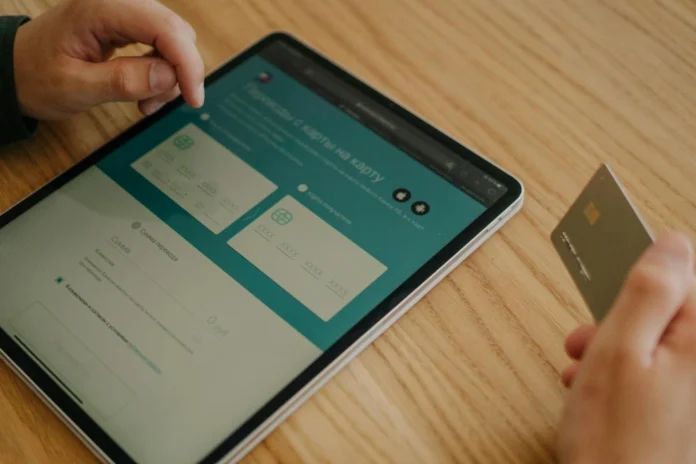Traditional underwriting has long depended on extensive credit histories and manual reviews. In contrast, today’s fintech innovators are reshaping the model, leveraging alternative data sources and automated, code-driven agreements.
Borrowers now engage with streamlined, modular services integrated directly into shopping carts, accounting platforms, and supplier systems. This isn’t just a technological upgrade—it reflects a broader shift in the balance of power within lending relationships.
As this transformation accelerates, the focus turns to embedded finance partnerships and their role in opening new frontiers in credit access.
Seamless Access and Smarter Underwriting
Lending has shed its paper-heavy past for seamless, embedded credit experiences. Many U.S.-based platforms integrate instant financing directly into merchant checkout flows.
This reduces approval times from weeks to minutes and keeps borrowers in a single interface from purchase through funding. Online lenders like CreditNinja.com showcase how this one-click credit model drives higher conversion rates and provides richer data for smarter underwriting.
This “one-click credit” model drives higher conversion and enriches underwriting data. Each transaction reveals actual spending behavior and repayment intent, paving the way for continually refined loan offers.
Underwriting now fuses traditional credit files with alternative signals, from utility bill payments to payroll deposits accessed via account-aggregation APIs.
Lenders unlock thin-file segments without inflating default risk by saving in rent and subscription-service records. This layered approach expands access for those sidelined by static scores, relying on proven, everyday payment habits rather than long credit histories.
Automated Lifecycles and Modular Credit Suites
Once a loan is live, automated lifecycle engines take over. Disbursements trigger real-time ACH or push-to-card transfers, while servicing rules monitor payments and flag early distress.
Automated reminders and tailored forbearance offers engage borrowers before delinquencies rise, cutting collections costs and preserving relationships. Lenders hand off aged accounts when recovery is necessary to digital-first debt-collection agencies. These agencies deploy omnichannel outreach (email, SMS, web chat) and self-service payment portals to resolve balances faster.
Digital platforms now offer modular suites that bundle term loans, revolving credit lines, and receivables financing. Businesses can select the product best aligned with their cash flow needs, while the system continuously re-underwrites exposure in real time as balances fluctuate.
Underlying every click, embedded fraud filters and open-banking feeds power real-time risk scoring, ensuring offers align with a borrower’s current capacity, not just their past footprint. This end-to-end design makes lending not only faster but fundamentally more resilient.
Embedded Lending Through Ecosystem Partnerships
Lending is no longer siloed within banks or fintech stand-alones. It’s weaving into broader ecosystems. E-commerce platforms, supply-chain networks, and vertical marketplaces embed financing options directly into user journeys.
A merchant checkout can trigger an instant credit offer tailored to the basket size and customer profile. This removes abandonment points, drives higher conversion, and unlocks new revenue channels for ecosystem hosts.
The appeal for partners lies in fostering loyalty. They keep customers engaged longer. Fintech providers gain access to vetted credit pools, reducing underwriting risk.
Behind the scenes, APIs power these deals. Open banking frameworks and secure data-sharing channels propel real-time decision-making. It’s a win-win. Merchants boost sales, lenders tap new demographics, and borrowers experience seamless funding when needed.
Buy Now, Pay Later, and Short-Term Credit Solutions
Short-term credit has become a focal point in consumer lending, with Buy Now, Pay Later (BNPL) leading the way. It allows shoppers to split purchases into multiple payments, often without traditional credit checks for smaller transactions.
What began as a pandemic convenience has morphed into a mainstream option. Infrastructure upgrades now handle approvals in milliseconds, and mobile apps track upcoming installations.
New regulations are setting guardrails to protect users in more complex scenarios. For instance, recent mandates in Australia require BNPL providers in certain regions to hold formal credit licenses. Starting June 10, 2025, they must also perform affordability checks on larger purchases.
This shift signals regulators’ intent to balance innovation with consumer protection. Meanwhile, providers refine risk models using alternative signals, like transaction velocity and purchase context, to underwrite borrowers beyond conventional credit histories.
Regulatory Sandboxes and Compliance-Tech Tools
Innovation doesn’t happen in a vacuum. Rules and oversight shape it. Regulatory sandboxes have become a cornerstone for fintech experimentation. These controlled environments allow new lending models to launch under relaxed compliance requirements.
Teams can test customer onboarding, fraud controls, and data privacy measures with real users. Regulators monitor outcomes. They gather evidence on risks before crafting permanent frameworks.
This “test-and-learn” approach speeds time-to-market. It reduces guesswork and lowers barriers for smaller players who can’t afford full licensing upfront.
Beyond sandboxes, compliance-tech tools are stepping up. They automate identity verification, monitor transaction patterns for suspicious activity, and generate audit trails that satisfy global data privacy laws. For lending platforms, embedding these smart controls is non-negotiable.
Failure to comply can trigger hefty penalties. But automated compliance also becomes a competitive edge. It reassures investors and partners. It signals readiness for cross-border expansion.
The Road Forward
Lending has evolved from rigid processes into dynamic digital journeys. The new baseline is Fintech’s modular systems, real-time servicing, and product flexibility. Borrowers expect immediacy, and lenders demand efficiency. The winners will be those who weave technology, data, and compliance into a seamless experience that meets market needs.



